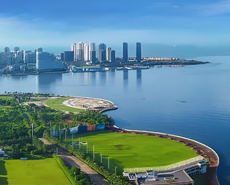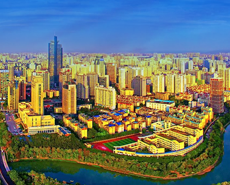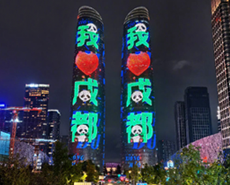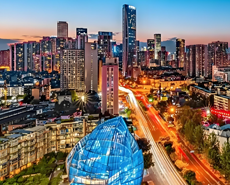HRC export market prospect bright but road tortuous
----Interview with Jiang Rizhong, Vice General Manager of Hangzhou CIEC International Co., Ltd.
Founded in 1997, Hangzhou CIEC Group is a state-owned company with the registered capital of RMB1 billion (USD144.9 million). CIEC involves in domestic selling and export of finished steel, steel raw materials as well as base metals. Nowadays, the company has become a multi-mode enterprise on trading, investment and financing. After years of development, CIEC has earnt a favourable reputation in the steel industry both at home and abroad.
Asian Metal: Good afternoon, Mr. Jiang. Thanks a lot for agreeing to the interview. Please could you briefly tell us about your company.
Jiang: It’s my pleasure. Generally speaking, there are three major parts of our company, iron ore import, domestic finished steel sales and steel export. We imported 35 million tonnes of iron ore, and sold 20 million tonnes of finished steel and exported 6 million tonnes in 2016. The total sales volume increased by 34% on a year-on-year basis. Meanwhile, the operating revenue reached RMB68.27 billion (USD9.89 billion), witnessing a year-on-year rise of 29%.
Asian Metal: Where are your materials exported? How about customers?
Jiang: We mainly export to Southeast Asian countries and regions because of geographical advantages. Meanwhile, most of our clients are end users. For example, HRC are mainly sold to producers of steel pipe, CRC and steel structure.
Asian Metal: From February 2016 to February 2017, the HRC export price in China has increased from the lowest point of USD270/t FOB to USD515/t, but it began to drop since early March, with the total mark-down of over USD80/t by now, weakening confidence of market participants to a large extent. What do you think is the main reason for the sudden drop?
Jiang: Actually export prices are highly related to domestic selling ones. In my opinion, there are two main reasons for the price decrease. One is the continuously weak demand, and the other is periodicity. To specify, the price for HRC almost doubled in 2016, and traders were active in supplementing inventories at that time, with positive expectations in 2017. However, the market is rather disappointing this year. The price kept decreasing from early March and traders with heavy inventories were eager to conclude deals to avoid potential risks. Therefore, they had to cut prices again and again, which leads to a further price decline.
Asian Metal: Yes, continuous price drops also force mills to reduce output. As far as I learnt, major HRC producers such as Ansteel, Bengang Steel, HBIS, Shougang Steel and so on all cut output since the middle of April, and they prefer to enlarge export proportion to transfer domestic sales pressures. So, how do you think the market outlook for HRC export? Will the price go up in Q3 and Q4?
Jiang: To be honest, the market performance showed signs of warming up when it entered the second quarter. After all, the export price rebounded for several times and released some positive signals to the market. As we know, the price kept going down sharply in March. Therefore, I believe a mark-up of below USD50/t is reachable in the remainder of this year with the reduced delivery from mills as well as stronger demand.
Asian Metal: I heard that more and more overseas buyers have tended to import HRC from India and Russia for lower prices in recent one year due to higher prices in China, so how much are CIEC influenced?
Jiang: It is true. Chinese mills and exporters suffered a lot by lower-prices materials from India and Russia, and statistics showed that the steel export in China dropped by over 25% in April.
CIEC has been involved in international trading formally since 2016, that is, we order from lower-prices regions, and then export to target regions directly rather than from Chinese exports. Currently 10%-20% of our exports are materials purchased from other countries instead from China.
Asian Metal: The steel market is still dominated by buyers now with suppliers bidding fiercely. More than 1/3 of enterprises have gone bankrupted in past two or three years. How do you think about the market prospect?
Jiang: The threshold for steel industry is low, so that bankrupts of small enterprises are expected. Personally I foresee a continuous shuffling in the industry. As the famous saying goes, the future is bright, but the road is tortuous. Enterprises need to keep pace with the times and innovate constantly in order to enhance their core competitiveness.
Asian Metal: What’s your biggest challenge at present? What about your advantages?
Jiang: Our advantages are mainly embodied in four aspects. Firstly, we started the steel business as early as 2003, and have built firm relationships with mass clients. Secondly, we are not only involved in finished steel such as HRC, Coated and rebar only, but also deal with raw material like iron ore, which helps us to avoid potential risks from sudden price drop of certain products. Thirdly, we have our own Black Industry Research Institute, who follows the market trend and provides timely information for us. The last, apart from trading in the spot market, we expanded business scope to the futures hedging business as well.
There are two main challenges we are facing now. One is frequent prices change starting from March as well as contradiction of positive-negative news made us a little bit uncertain about the market outlook, the other is we urgently need talents to follow up the rapid business development.
Asian Metal: Thanks so much for your time.
Jiang: It’s my pleasure.
















